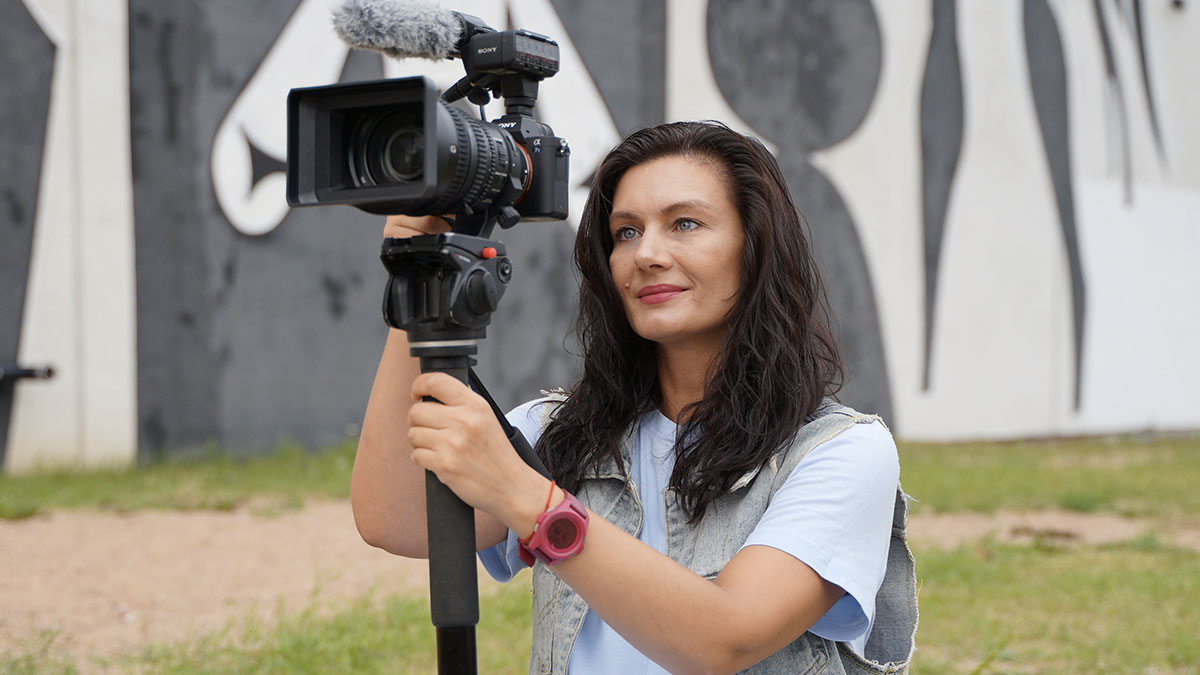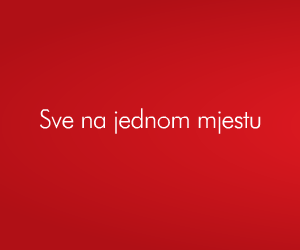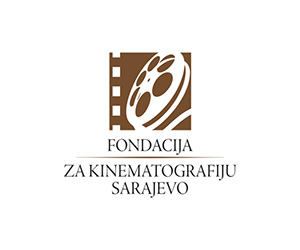
11/10/2025
The director of the film that won the Grand Prix of 26 MFF: Film has to be honest, not perfect
The documentary film "Welded Together“, directed by Anastasya Miroshnichenko won the Grand Prix of the 26th Mediterranean Film Festival. The film presents an intimate portrait of a young woman torn between the demands of hard work and the complexities of her family circumstances. The protagonist, Katya, is simultaneously a welder, the daughter of a mother struggling with alcoholism, and the older sister of a little girl she has to take care of. Through an authentic, observational approach, Miroshnichenko effectively conveys the deep emotional layers and social context of contemporary Belarus, without losing sight of the universality of the subject. The documentary, which has already won numerous awards and qualified for an Oscar, once again, at the festival, confirmed the power of film to bridge differences and bring human stories closer. On this occasion, we spoke with the director about the creative process, personal motivations, and the challenges and responsibilities of documentary expression.
"Welded Together" portrays Katya as a young woman fighting on several fronts – as a worker in a demanding profession, as a daughter facing her mother’s alcoholism, and as a sister trying to protect little Amina. All these layers carry a strong social and personal message. When shaping the story, what was more important for you to emphasise – the individual struggle and emotions, or the broader social context of life in today’s Belarus?
My task as a documentary filmmaker was to convey as accurately as possible the reality surrounding the main character, her experiences, life circumstances, and interests. Katya’s life is full of daily struggles – hard work, the need to care for her little sister Amina, and problems at home. I wanted to stay true to her world and outlook on life, therefore, I didn’t intend the film to be a direct social or political statement. I believe that the issues raised in the film – family problems and addiction of our loved ones – are universal and relatable to people all around the world. So, Katya's story reflects what many of us experience and could have happened anywhere. At the same time, I certainly sought to convey a sense of time and place, to immerse the audience in the atmosphere of today’s Belarus. And I hope I succeeded.
How did the idea for this film come about?
One day, I saw a short news video about a young welder Katya. There was no information about her private life, only about her unusual job. But there was something about her that captured my attention, and I couldn't get her out of my mind. When we finally met, and I got to know Katya better, her life experience resonated with me on a personal level. My family member struggled with alcohol addiction. So, I know what it’s like to live with an alcoholic. It’s emotionally devastating to watch our loved ones slowly destroy themselves. You are stuck in a repeating cycle of hope and heartbreak when you genuinely believe that one day things might change. The film combines two story lines – a troubled female world, where Katya deals with family problems, and a male world, where she feels like she truly belongs. These two aspects of her life help us show both her vulnerability and resilience in the face of adversity. That's why the title Welded Together is not only a reference to Katya's profession as a welder who joins separate pieces of metal into a single whole, but also serves as a metaphor for the unbreakable bond between the two sisters in dramatic life circumstances.
The film opens the door to intimate family moments, especially Katya’s relationship with her mother and half-sister? Was there a moment during filming that was particularly emotional or difficult for you, and why?
Shooting such intimate family moments was possible due to a combination of factors. First, time was essential. This is an observational documentary, so we filmed it over a long period of time, observing the characters in various situations. Over time, they got used to the camera, started to perceive it as part of their daily lives, and behaved naturally. This is how we were able to capture genuine human emotions in a given moment. Second, we used long-focus lenses. This allowed us to keep physical distance from the characters while creating the feeling that we were very close to them. This approach helped preserve the intimacy of the moment without us being intrusive.
At the heart of the film are female relationships – between mothers and daughters, sisters, and friends. How important was it for you to highlight this female solidarity and the struggle for a better life?
Yes, there are many women in the story – Katya, her mother, sister, and friends – but I didn’t intend the film to be a statement of female solidarity. For me, the film is, above all, about people, their relationships, and true feelings. But I believe that solidarity is an important part of human existence. The visual impression of the film is striking – from snowy landscapes to industrial settings that underline the weight of Katya’s story. Director of photography Pavel Romanenya made a major contribution to this look.
What was your collaboration with him like in creating this strong atmosphere, and how crucial was his contribution to giving the film such a distinctive visual identity?
Thank you for asking such a great question. I believe that it is cinematography that allows us not only to capture events but also to convey the emotions behind them. Pavel and I spent a great deal of time getting to know the characters, observing their lives, and talking through the details, which helped us develop a shared understanding of how to better tell Katya's story using visual language. Pavel's ability to see and capture the beauty and drama of everyday life was essential for creating the film's visual atmosphere. His work contributed to the film’s distinctive visual identity while serving the characters and their story so that the audience could not only see a beautiful shot, but also feel the space, the mood, and penetrate Katya's inner world.
The film is a documentary, yet it carries the structure and emotion of a drama. How challenging was it to balance documentary authenticity with dramatic tension?
The events in Katya’s life were dramatic and full of emotional tension. As director, I strove to convey this as honestly and carefully as possible. We shot what life provided, but it was the deliberate choice of points of observation, rhythm, and intonation that contributed to the film's dramatic storytelling. Perhaps this is why the film feels both documentary and dramatic.
The film deals with growing up in harsh conditions, with loss and responsibility. What would you like the audience to take away after watching it?
I believe that documentary films provide an excellent opportunity to get to know and understand people from different parts of the world, to erase boundaries and discover what we have in common with others, and to explore the universal experiences and emotions. For me, it’s a film about love, a difficult moral choice with no right answer, and the sacrifices we make for those we love. At the same time, I hope that everyone who watches it will find something important in this story that resonates with them personally.
The film won the Grand Jury Award in the International Competition at Sheffield Doc/Fest 2025, the festival’s highest recognition, which also includes Oscar qualification.
I realise that screenings at festivals are especially important for documentary films. It’s not about public image, but about the fact that festival screenings are often the only way for real stories to reach audiences around the world, since there are generally fewer distribution opportunities for documentary films than for fiction films. I'm very happy and grateful that the film won the grand jury award at Sheffield Doc/Fest. This award means a lot not just to me, but to everyone who was behind bringing Katya’s story to light. I'm very happy and grateful that the film won the grand jury award at Sheffield Doc/Fest. This award means a lot not just to me, but to everyone who was behind bringing Katya’s story to light. I also hope that this recognition will help the film reach a wider audience, so that many people can connect with it personally and find something in the story that touches their hearts or gives them something to reflect on. The fact that the film will also be screened at the Mediterranean Film Festival means a great deal to me. This is another wonderful opportunity to share Katya’s story with the audience. This is what I strive for professionally: to make the audience feel this human dimension of the story, sense that the characters on screen are real people with real emotions, struggles and dreams. If I managed to achieve this, that is the greatest reward for me.


